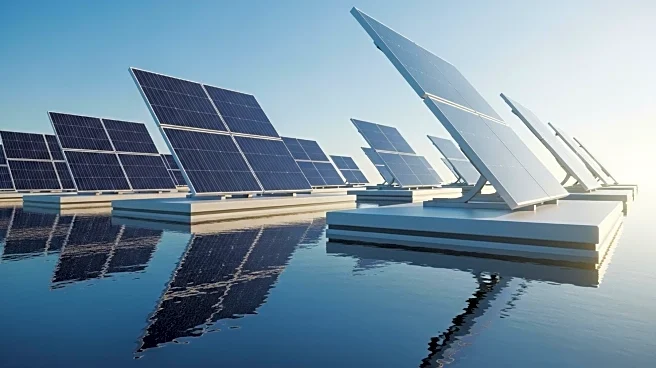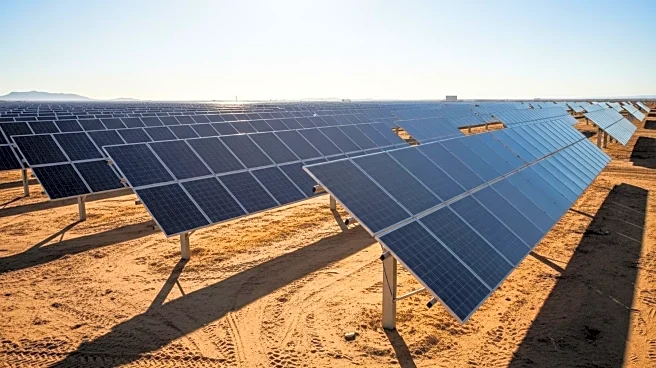What's Happening?
Floating solar technology is emerging as a viable solution for energy savings and water conservation in the United States. Nova Southeastern University (NSU) has become the first university in the U.S. to incorporate a commercial-level floating solar system into its energy portfolio. The system, with a capacity of 700 kilowatts, is being constructed to supply electricity to NSU's student housing complex, Mako Hall. This development highlights the growing interest in floating solar systems, which require specialized racks and mooring systems, and are seen as cost-effective due to economies of scale. The installation is expected to be completed within 90 days, demonstrating the ease of setup compared to traditional land-based solar systems. Additionally, floating solar systems are being adopted by water treatment plants, such as the Signal Hill Water Treatment Plant in Utah, which has reduced its grid energy consumption by 92% with a new floating solar array.
Why It's Important?
The adoption of floating solar technology is significant for several reasons. It offers a sustainable energy solution for institutions and facilities with limited land space, such as urban campuses and water treatment plants. By utilizing water surfaces, these systems can reduce energy costs and conserve water by minimizing evaporation. The technology also supports the transition to renewable energy sources, contributing to environmental sustainability and energy independence. As more institutions adopt floating solar systems, the demand for specialized equipment and services is likely to increase, potentially driving innovation and reducing costs further. This trend aligns with broader efforts to enhance energy resilience and reduce reliance on fossil fuels, which is crucial for addressing climate change and promoting sustainable development.
What's Next?
The expansion of floating solar technology is expected to continue, with companies like Third Pillar Solar planning to install systems on reservoirs in Texas, potentially generating up to 500 megawatts of clean energy. This initiative represents a significant investment and aims to conserve freshwater resources in water-stressed regions. As the technology gains traction, more institutions and facilities may explore floating solar solutions, leading to increased adoption and further advancements in the industry. The success of these projects could encourage policymakers to support renewable energy initiatives and provide incentives for the development of floating solar systems, fostering a more sustainable energy landscape in the U.S.
Beyond the Headlines
Floating solar technology not only offers practical benefits but also presents ethical and environmental implications. By reducing land use for energy production, it helps preserve natural habitats and agricultural land. The technology also addresses water scarcity issues by conserving water resources, which is crucial in regions facing droughts and water shortages. Furthermore, the shift towards renewable energy sources like solar power contributes to reducing greenhouse gas emissions, supporting global efforts to combat climate change. As the industry evolves, it may also create new job opportunities in manufacturing, installation, and maintenance, contributing to economic growth and workforce development.













